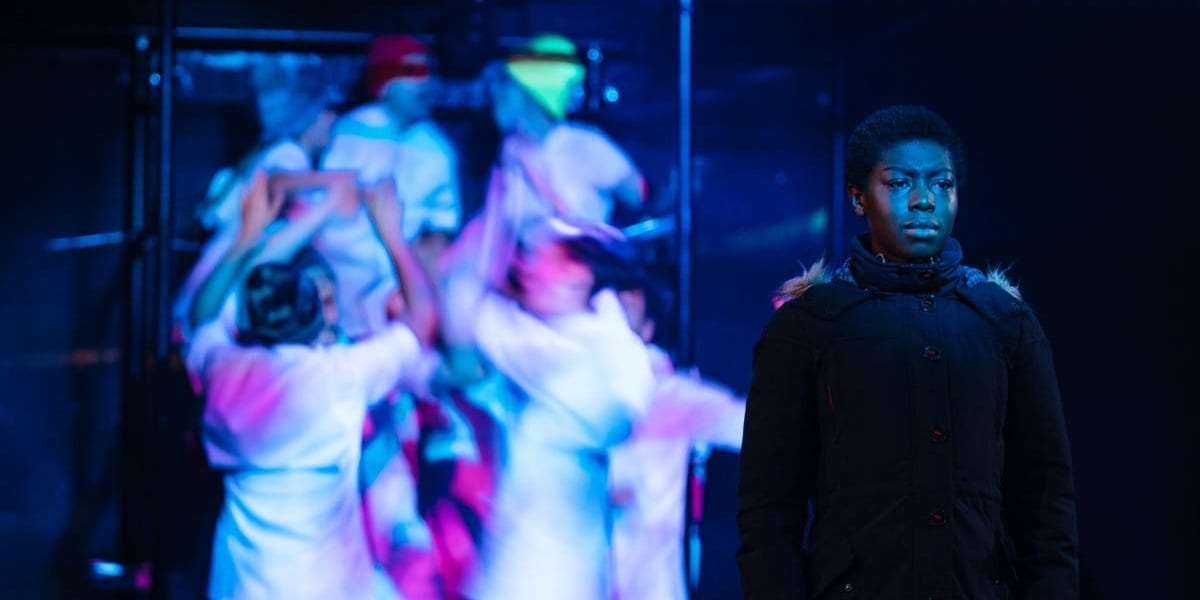Exploring artificial intelligence, emotional learning and what it means to be post-human, the play starts with a clearly very thoroughly rehearsed sequence of choreographed movement that precedes the introduction of the narrator. He is at a conference, speaking about virtual reality and what it will do to our society, to human activities and relationships, as it transcends bodies and space. This sets the tone for the rest of the play, both fast-paced and thought-provoking. From then on, the narrator regularly stands up to switch between the many stories being told at the same time, binding them all together in an ingenious way and adding to the suspense of the play.
Exploring still unchartered territories, his sister Bob is the leader of an Arctic expedition -whose team mainly consists of robots- when she discovers a very poorly woman lost at sea: where does she come from, what is her story? So starts the story of Victoria Frankenstein, a gifted scientist who creates a sophisticated robot, giving her not only life, but also feelings and emotions. Mary Shelley’s classic is thus given a very modern twist and turned into a science-fiction murder mystery in which we discover the fate of the creator and the hideous creature she has engineered.
All of the actors from the National Youth Theatre play extremely well with great attention to detail and are attributed equally important roles in the play, with some playing multiple small parts in each of the storylines whilst others have major parts in one of the storylines. The inventive traverse stage means that two scenes -such as the party and the artic scene- can be happening on opposite sides of the stage without clashing, and sometimes even creates a dialogue between two stories with, for instance, the family of refugees and Victoria’s family and friends.
With VR headsets having been placed under our seats at the interval, we experience a philosophical and exciting second half. Is the ability to love and care what distinguishes us from machines? Who is responsible for the misactions of a robot: its creator or the machine itself? Can the creator be considered a modern mother who ought to take responsibility for her creation? Left with these questions, we then enjoy the Arctic Circle in all its VR glory and watch all the threads of the story being knitted together in front of our eyes.

